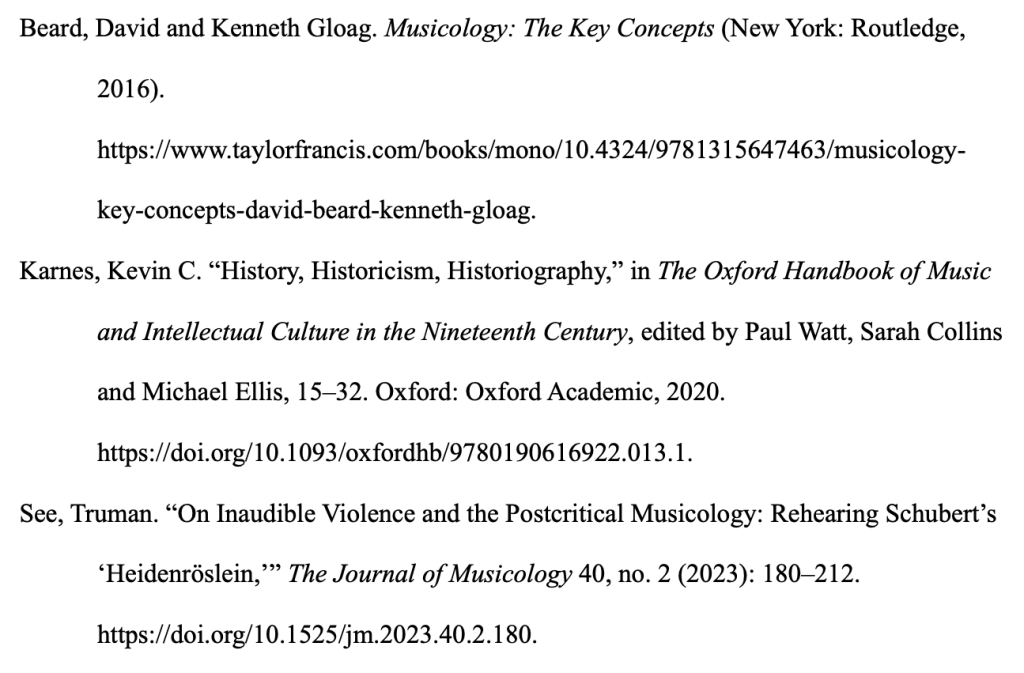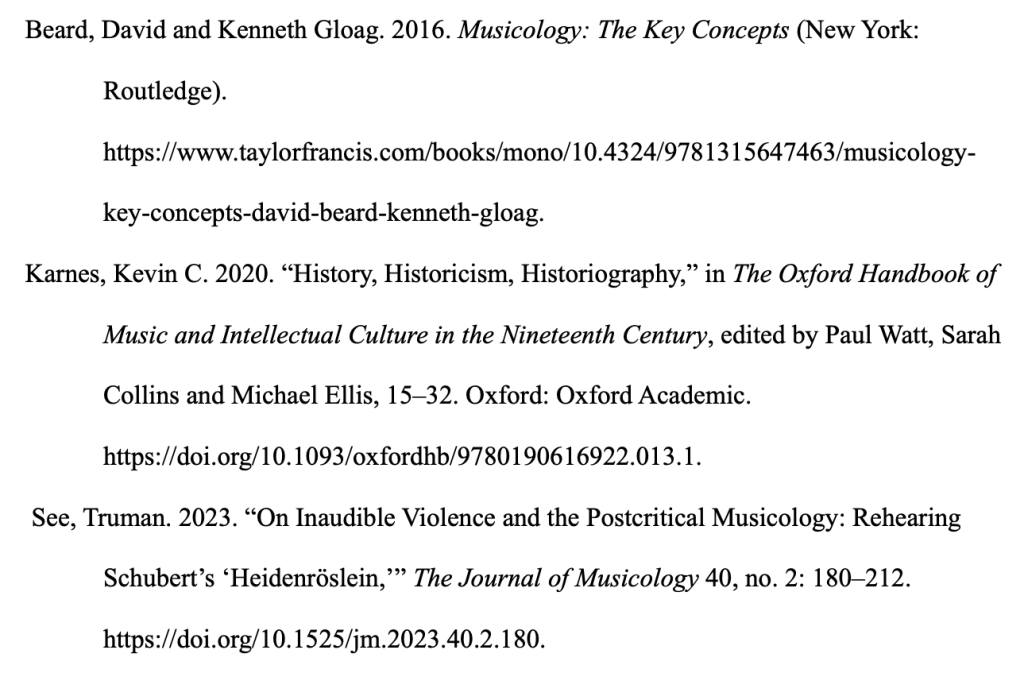25 Reference List or Bibliography
The reference list or bibliography provides a list of all the sources cited in your assignment.
To reference correctly, you will need to identify:
- creator(s) of the work (e.g. author, composer, performer)
- identification of the work (e.g. title, description)
- publication details (e.g. place of publication, publisher, date of publication, web location)
You may also need to include:
- edition (where there is more than one)
- other contributors (e.g. editors, translators, compilers)
- URLs (for online materials)
- information relating to original publication.
Formatting your Bibliography
When formatting your bibliography:
- organise the sources alphabetically via author surname, or by the first main word of the title (for sources with no author)
- use double line spacing
- use a hanging indent
- do not include line spaces between entries.
Sample Bibliography and Reference List
The examples below use the same references from the previous two chapters and set them out using a common word processor according to the principles outlined above.
Bibliography (Notes and Bibliography System)

Reference List (Author-date System)

Divisions within your Reference List or Bibliography
If you consulted a large number of resources for your assignment you may wish divide your reference list into categories.
If you consulted more sources than you referred to in your work, indicate which works were cited and which were not with under the headings:
- Works Cited
- Works Consulted.
Alternatively, you may divide your sources by:
- Primary Sources
- Secondary Sources.
Your lecturer or tutor will be able to guide you in deciding if this is necessary.

